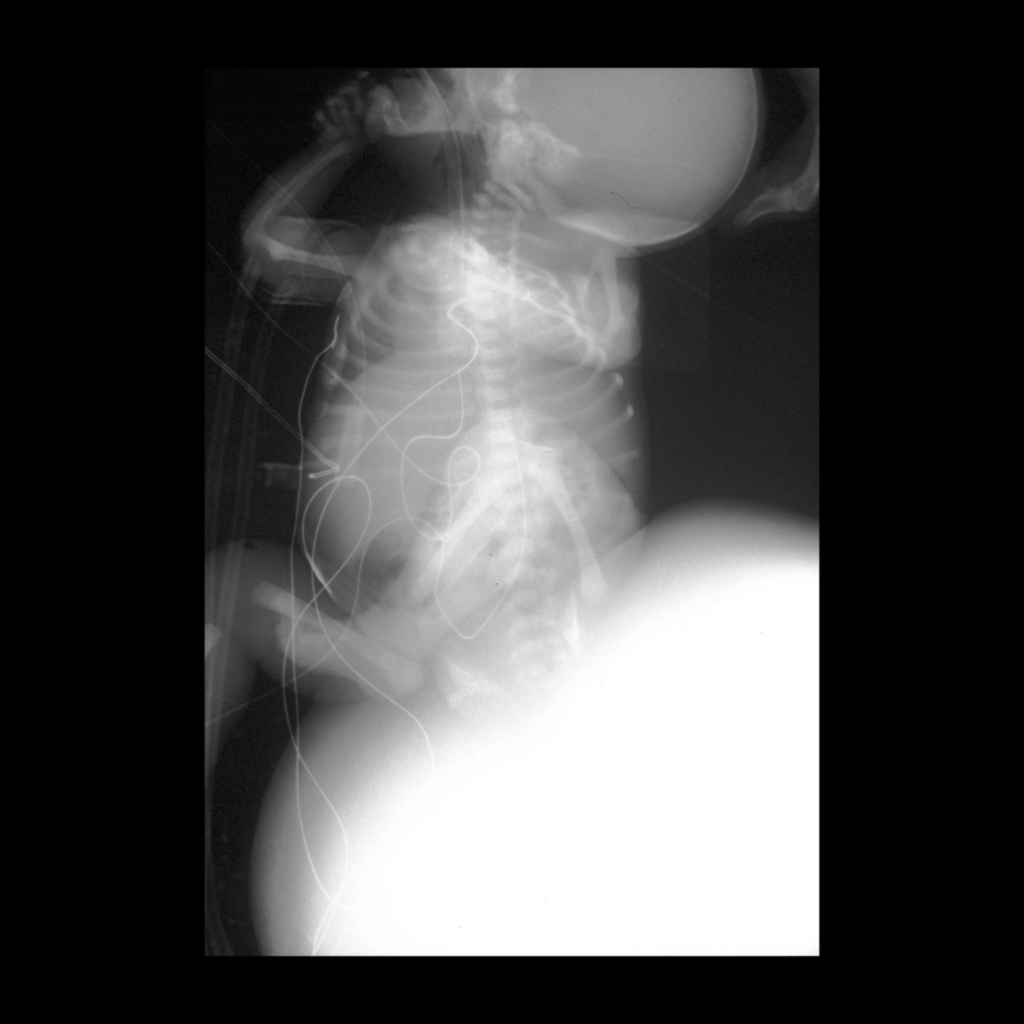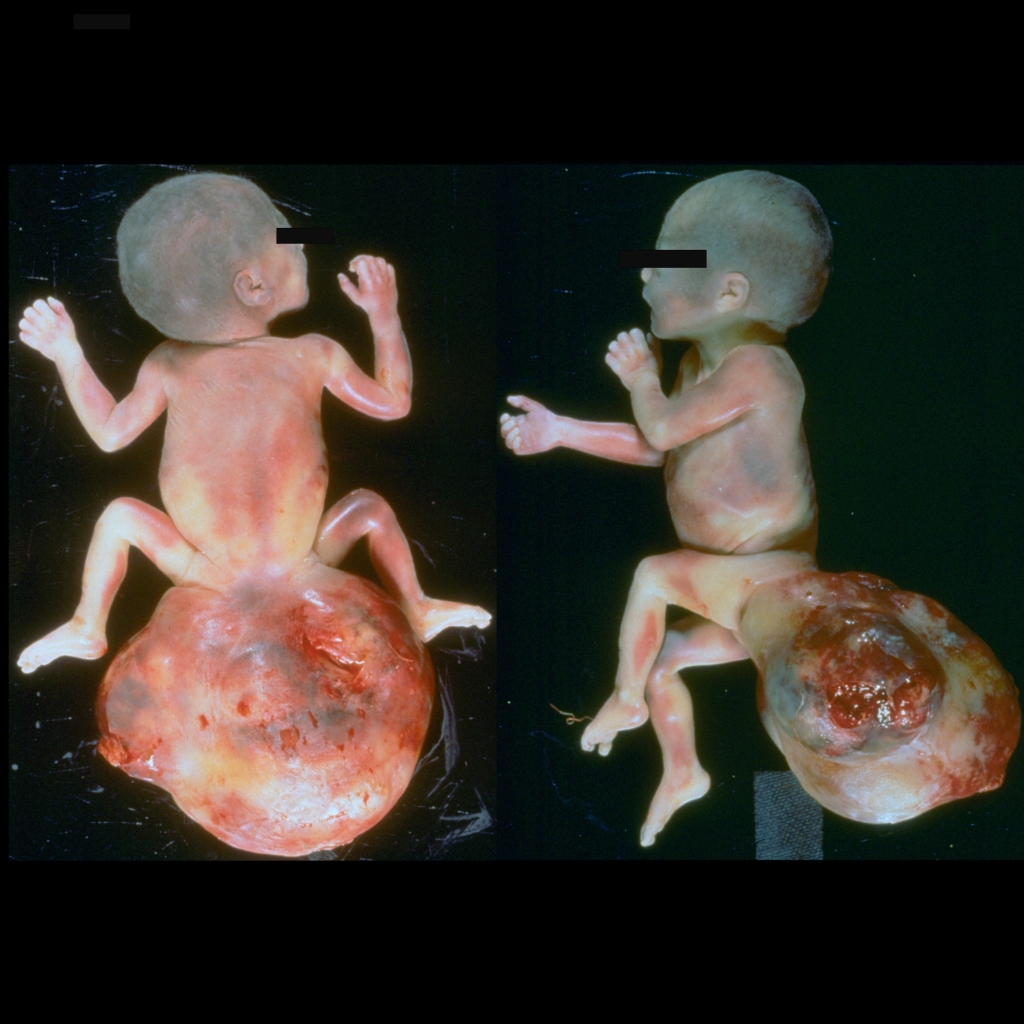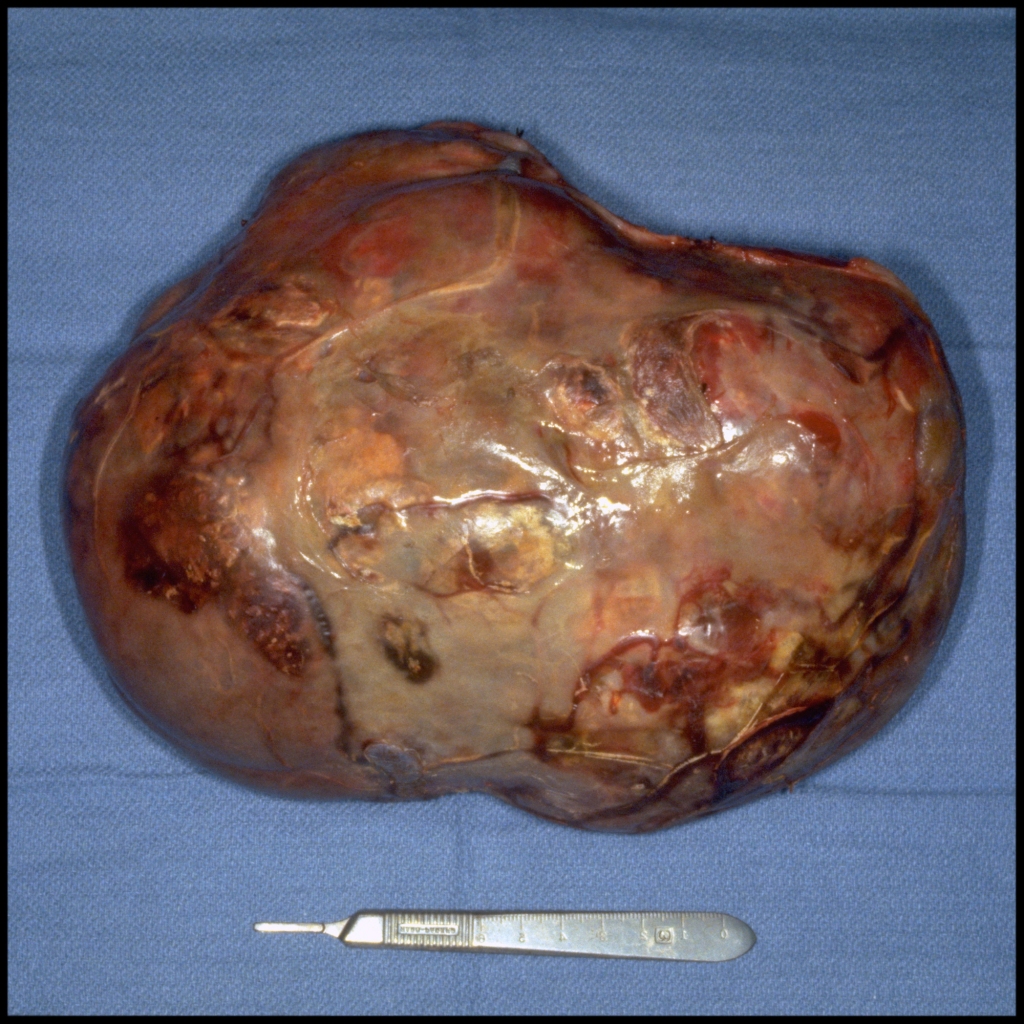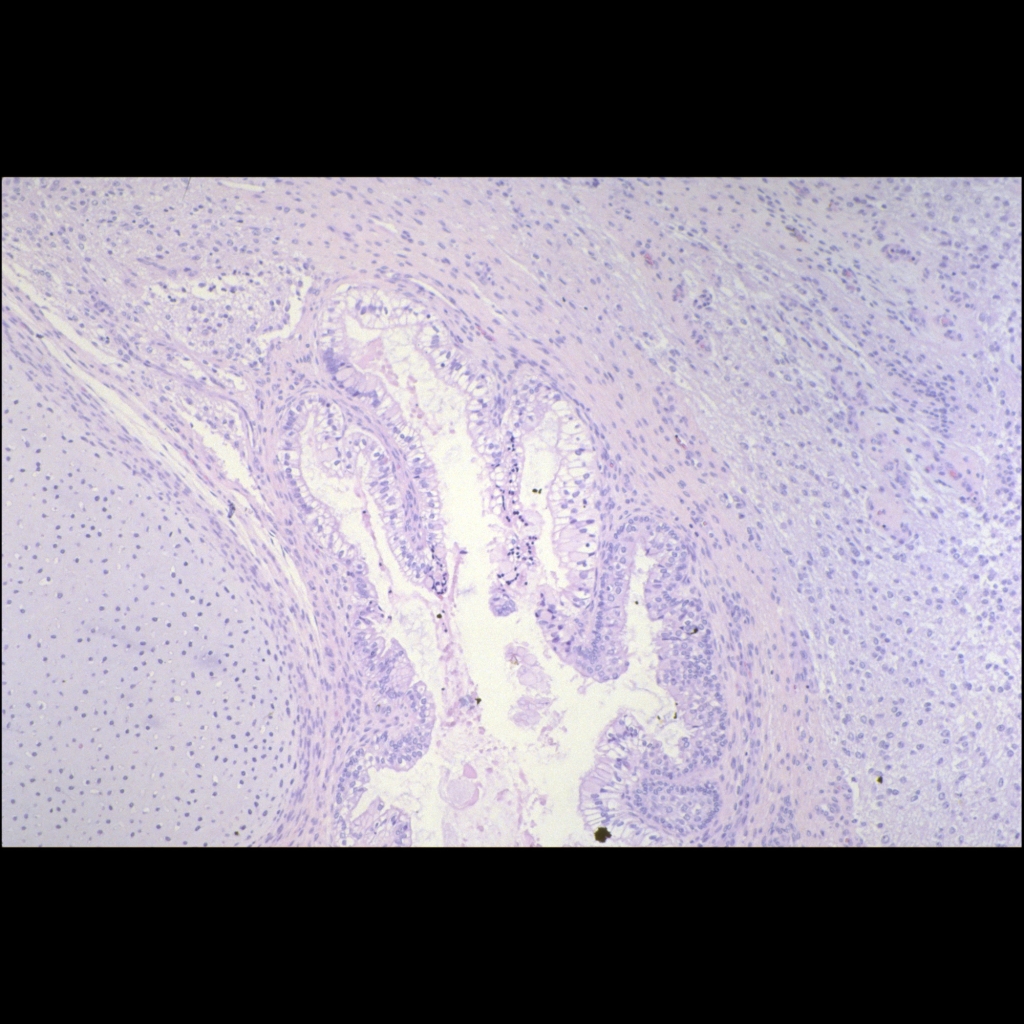- Etiology: Presacral germ cell tumor consisting of totipotential cells of Hensen’s node (caudal cell mass migrates anteriorly to coccyx)
- Imaging: mass is cystic / solid / mixed, may have increased vascularity, may have calcification
- Types: based on location in relationship to pelvis
— Type I – external
— Type II – external with intrapelvic component
— Type III – primarily internal with external component
— Type IV – entirely internal - DDX: presacral mass
- Complications: may transform into malignancy
- Treatment: surgery
- Clinical: AFP elevated, most common solid tumor in neonates, most common congenital neoplasm, 90% benign at birth, can present with high output congestive heart failure, may have hydrops fetalis particularly when solid, may be part of Currarino triad
Radiology Cases of Sacrococcygeal Teratoma


Clinical Cases of Sacrococcygeal Teratoma


Gross Pathology Cases of Sacrococcygeal Teratoma




Histopathology Cases of Sacrococcygeal Teratoma

